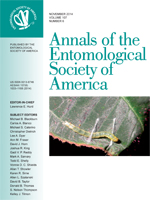
Two New Species of Calathus Bonelli (Coleoptera: Carabidae: Harpalinae) from the Ethiopian Highlands
Hypoxia Tolerance of Larvae and Pupae of the Semi-Terrestrial Caddisfly (Trichoptera: Limnephilidae)
